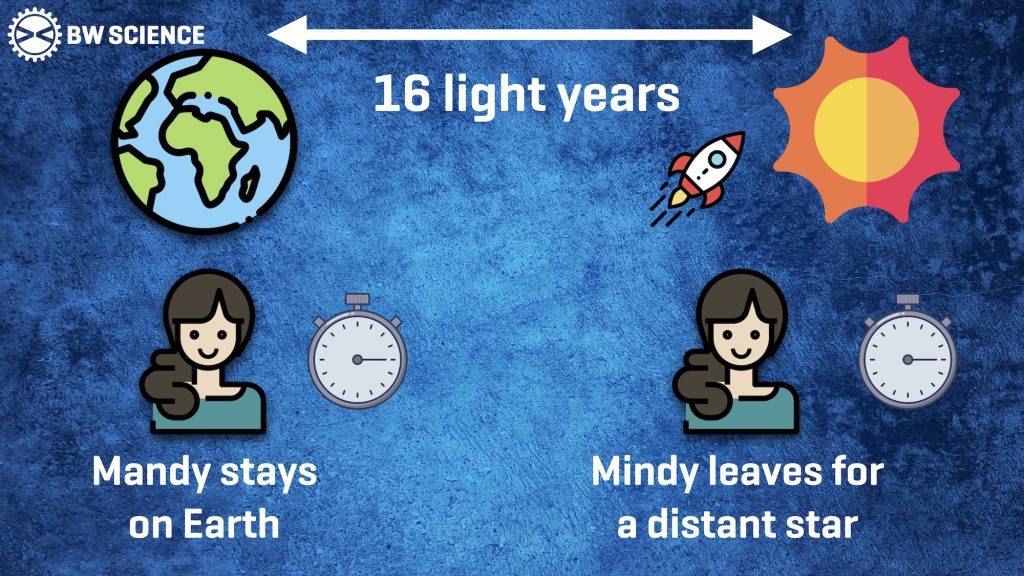Time travel features in the third workshop of my Irish school-based project ‘Exploring the Physics of Superheroes’.
Every day, we travel through space, from A to B and on to C. We are destined to do so until the end of our days, a destiny that many accept without dismay. But is travel through time possible? And if so, when can we go to?
Time travel is a concept often featured in popular culture such as films and books. The superhero genre is just one genre that has turned to time travel over the years. Recently, superhero films such as X-Men (Days of Future Past), Deadpool 2, and Avengers: Endgame have all included time travel as a central axis of their narratives, and they all use time travel in the same way – to travel to the past.
Unfortunately for these films, time travel to the past is, well, highly improbable and unlikely according to the laws of physics. But time travel to the future is physically possible, and here’s one way to do it.
Travel really, really fast!
Albert Einstein contributed quite a lot to physics at the start of the 20th century, among them being his theories on how space and time are related to each other. Along with a number of other physicists at the time, they concluded that space and time are linked to each other in the union known as ‘spacetime’. Yes, highly original in the naming, but it covers all the bases.
Spacetime is just another name for the container for our entire universe. Everything moves or exists in spacetime, whether it’s galaxies, solar systems, stars, or the Earth.

Einstein explored how moving through spacetime affected various properties of objects. In the first special case, he looked at instances where objects are not affected by gravity or accelerating, and in the second case, he included the effects of gravity (Check out my YouTube video for details on this). Let’s look at how the special case – known as special theory of relativity – allows for time travel.
In the special theory of relativity, there are two main rules to remember:
- The speed of light is a constant, with the speedy value of 299,792,458 m/s, and it’s the same for anyone regardless of how they are moving.
- The laws of physics are the same for anyone regardless of how they are moving (but provided they are not accelerating).
In summary, these two rules state that there is a speed limit for the entire universe (the speed of light), and that the laws of physics are the same for everyone (as long as everyone is moving at a constant velocity). Let’s be honest – the speed of light is quite fast, and to many, it’s unlikely we’ll ever travel that fast – ever. But strange things happen when you approach the speed of light. Mass increases, lengths get smaller, and time runs slower for fast-moving objects. And it’s the last strange thing that can help us to travel to the future. To understand how it works, here’s the twin paradox, an example often used to explain time travel.
The Twin’s Paradox

Let’s imagine that a set of twins – Mandy and Mindy. Now, Mindy is an explorer and she wants to travel to the stars, but Mandy isn’t so adventurous and she decides that she wants to stay on Earth.
Mindy opts to travel to a distant star in a powerful rocket ship some 16 light years away from Earth. By the way, a light year is the distance travelled by light in one year. And Mindy decides to travel to the star at 80% the speed of light, which is about 239,833, 966 m/s
Both though would like to keep track of the time while Mindy is away on her interstellar journey. So, both agree to carry a highly-accurate atomic clock with them at all times.
First, let’s look at Mandy’s situation. Mandy stays on Earth where her velocity is effectively zero for the duration of the experiment. Yes, Mandy might travel in a car or fly in an aeroplane every now and then, but the speed of the cars and aeroplanes are tiny in comparison to speed of Mindy’s rocket ship. According to Mandy, Mindy’s roundtrip to the distant star should take 40 years (which is 20 years to get there and 20 years to get back).

However, Mindy sees things a little differently than this. Mindy is travelling at 80% the speed of light. According to Mindy and using the laws of special relativity, her round trip should take 24 years, that’s 12 years to get there and 12 years to get back.
When Mindy gets back to Earth and compares her clock to Mandy’s clock back on Earth, Mindy’s clock will show that 24 years have elapsed, while Mandy’s clock will show that 40 years have elapsed.
In effect – Mindy has time travelled by 16 years to the future! Yes, we have time travel. However, there’s a small issue with this form of time travel – there’s no way to go back to the time where you started. It’s one way time travel!
More information on time travelling to the future
For more information on time travelling to the future check out my YouTube video “How to time travel to the future” in which I outline four different ways to time travel to the future.
About ‘Exploring the Physics of Superheroes’
‘Exploring the Physics of Superheroes’ is a new outreach project which allows students to experience the excitement of superheroes whilst learning about the physics that make such stories possible. The project is managed by Midlands Science and delivered by physicist Dr. Barry Fitzgerald (BW Science and The Superhero Scientist), who has done extensive research in this area. The project is supported by the Institute of Physics, whose Limit Less campaign aims to support young people to change the world by doing physics.

